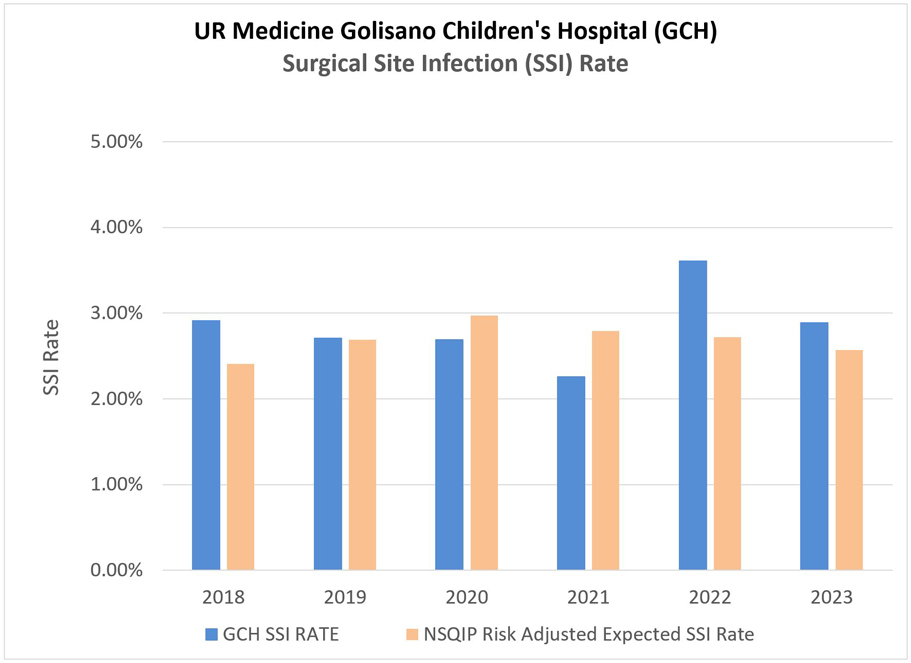Surgical Site Infection (SSI)
Surgical Site Infection (SSI)
Why This Measure is Important
- A surgical site infection (SSI) is an infection that occurs after surgery in the part of the body where surgery took place.
- Surgical site infections can sometimes be superficial infections involving the skin only. Other surgical site infections are more serious and can involve tissues under the skin, organs, or implanted material.
- Surgical site infections may lead to other complications for patients, such as extended hospital stays, greater likelihood of spending time in an intensive care unit (ICU), and a greater chance of being readmitted to the hospital. These complications expose patients to additional hardships and increased costs.
- Research has shown that proper administration of antibiotics can help prevent infections.
What You Can Do
- Make sure that all healthcare providers clean their hands before examining your child, either with soap and water or an alcohol-based hand rub.
- Family and friends who visit your child should not touch the surgical wounds or dressings.
- All visitors should clean their hands with soap and water or an alcohol-based hand rub before and after visiting your child.
How We Measure
- The percentage of surgical site infections associated with all pediatric surgical procedures.
- Our goal is to maintain infection rates lower than the national benchmark, ultimately driving towards zero.
What We Are Doing to Improve
- Consistently use a set of best practices, called bundles, to minimize the risk of these infections.
- Involve parents and caregivers in the prevention processes. For example, for surgeries with a high risk of infections, parents are asked to wash the child with an antibacterial product.
- Participate in Pediatric ACS NSQIP (American College of Surgeons – National Surgical Quality Improvement Program), a national improvement collaborative that helps hospitals collect reliable clinical data and compare their surgical outcomes with the outcomes of other participants in the program.
- Review all cases of SSI to identify opportunities for improvement.
